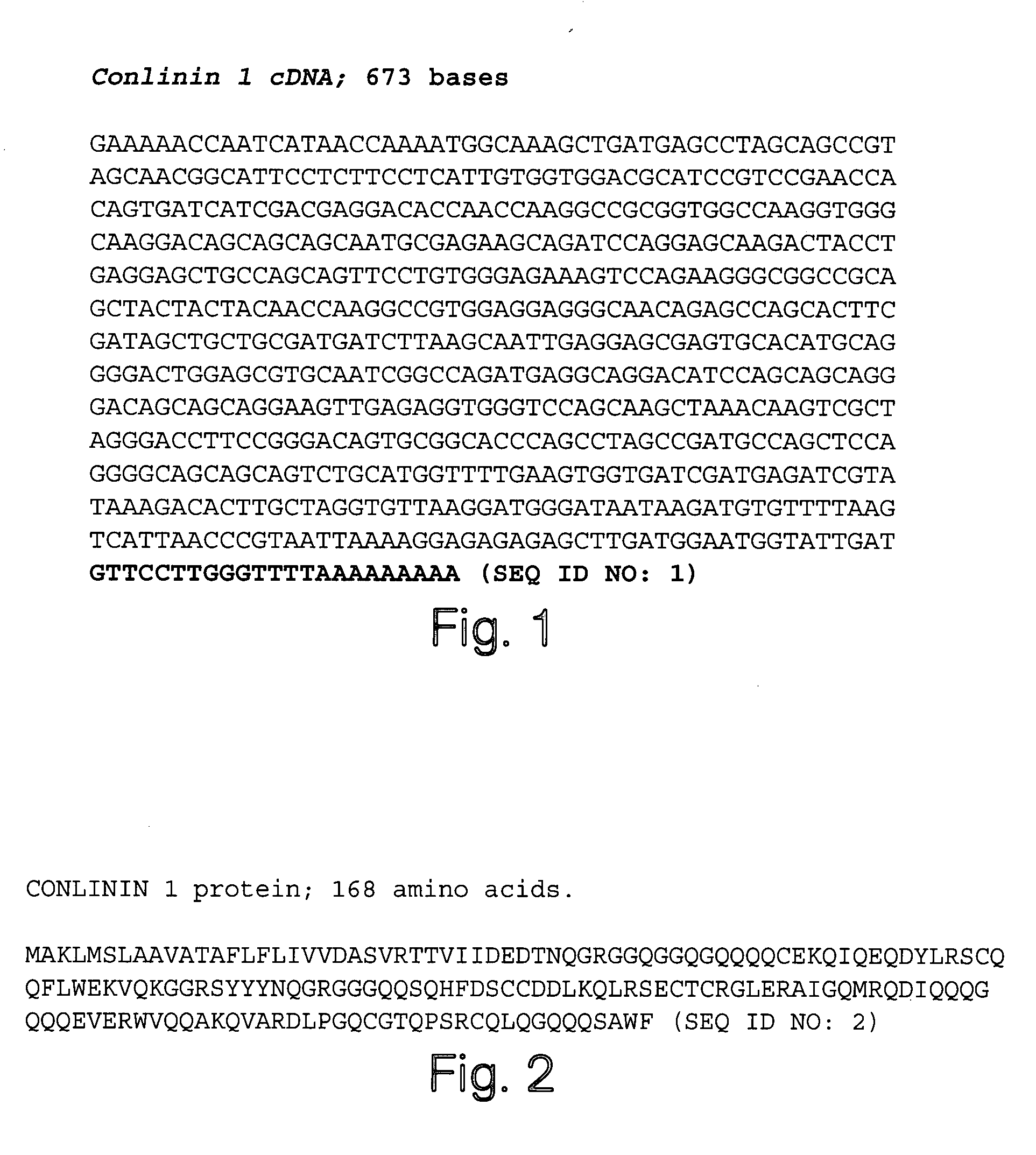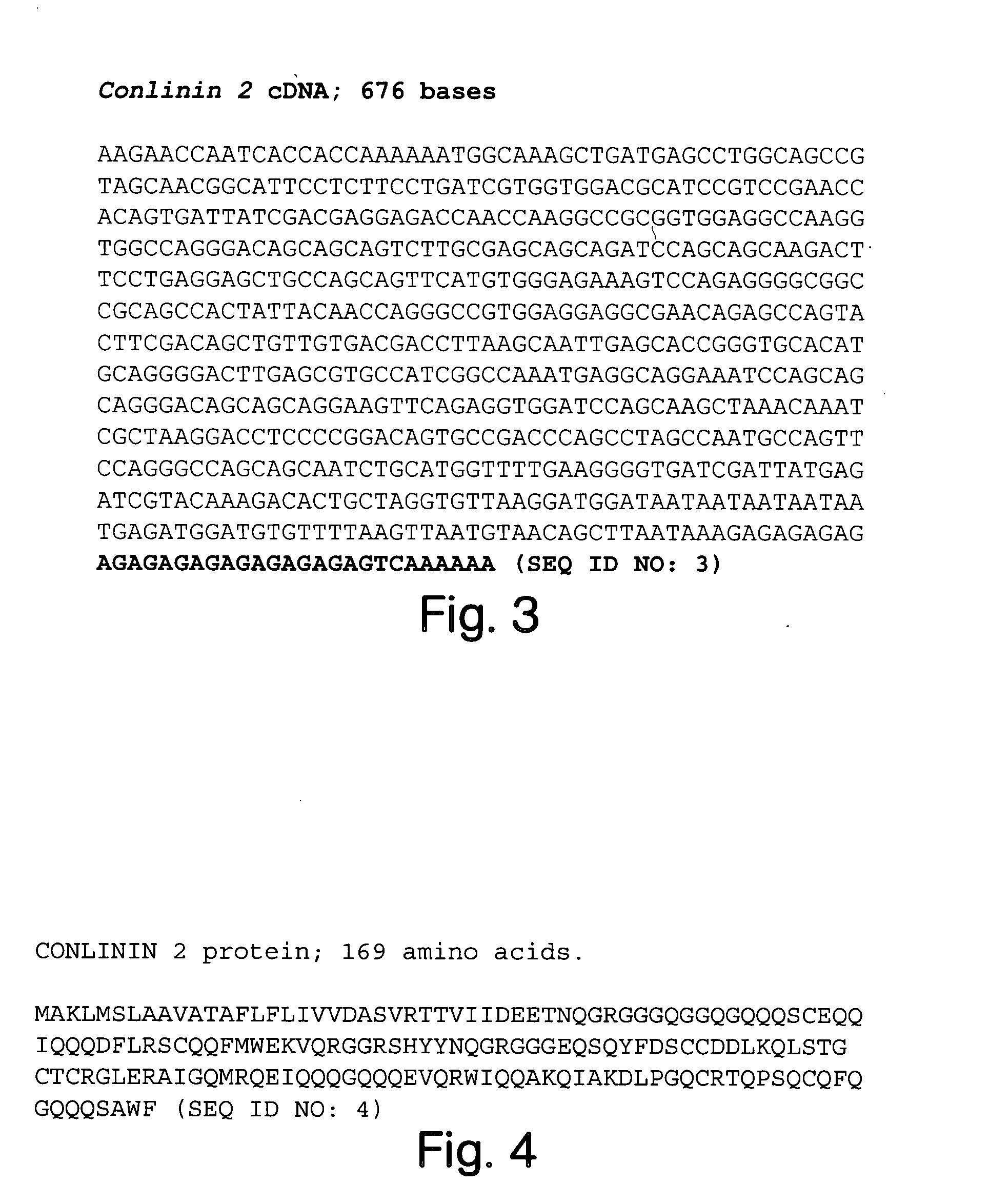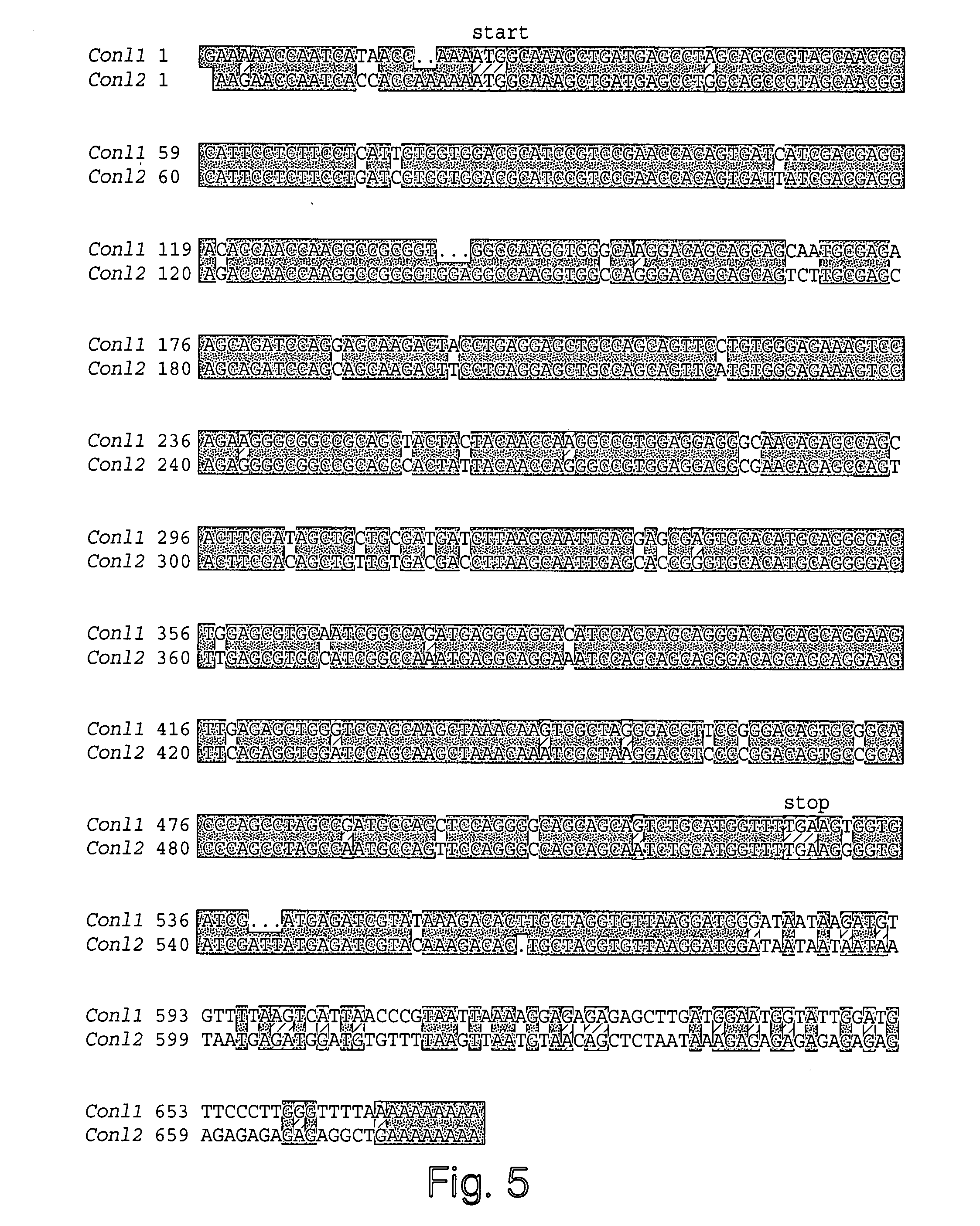Flax (Linum usitatissimum I.) seed-specific promoters
a technology of promoters and flax, which is applied in the field of plant molecular biology, can solve the problem of little effort in the identification of tissue-specific promoters in flax
- Summary
- Abstract
- Description
- Claims
- Application Information
AI Technical Summary
Benefits of technology
Problems solved by technology
Method used
Image
Examples
examples
General Methodology:
Plant Material
[0156] Linseed flax (Linum usitatissimum L.) cultivar CDC Normandy and S93-708 were grown in the growth chamber under standard conditions. Developing seeds were harvested at different days after flowering (DAF) and used for embryo excision, RNA isolation and the construction of the cDNA library. Fifteen-day-old seedlings of the same varieties were also used for the isolation of genomic DNA and construction of flax genomic library.
RNA Isolation
[0157] Leaves, stems, roots and developing seeds at various DAF were collected and frozen in liquid nitrogen immediately and kept at −80° C. Total RNA was extracted by using RNeasy plant mini kit (Qiagen). Embryos released from the developing seeds were homogenized with extraction solution RLC in the kit. Total RNA was eluted with RNase-free water and its concentration was determined by spectrophotometer.
cDNA Library Preparation and Screening
[0158] The total RNA was extracted from flax embryo without ...
example i
Isolation and Analysis of Conlinin Genes and Promoters
Identification of Flax Conlinin Genes
[0174] According to the hybridization patterns, the preferentially expressed cDNAs in the developing seeds were divided into three groups. The first group of clones had similarity to 2S storage proteins from other plant species, the second group to 12S storage proteins, and the third group consisted of cDNAs that did not hybridize to either group.
[0175] One clone (Conlinin 1) from the first group was selected for further analysis. It is 673 bp long (FIG. 1, SEQ ID NO:1) coding for a 168 amino acids (FIG. 2, SEQ ID NO:2) with molecular weight 19 kd and isoelectric point at 7.5. Another cDNA clone from the same group (Conlinin 2), encoded by another member of the gene family was also identified. It is 676 bp in length (FIG. 3, SEQ ID NO: 3) and codes for 169 amino acids (FIG. 4, SEQ ID NO:4). The difference in nucleotide sequences between Conlinin 1 and Conlinin 2 is relatively small, with 4...
example ii
Isolation and Analysis of LuFad3 Gene and Promoter
Identification of LuFad3 cDNA in Flax
[0185] To isolate LuFad3 cDNA from flax, two degenerate primers that target the first and third histidine-rich motifs were utilized to RT-PCR the fragment by using the total RNA from the developing seeds as the template. Sequence analysis of amplified fragments revealed that one clone has high sequence similarly to ω-3 desaturases from other plant species. A blastn search of Lufad3 mRNA revealed an approximate 60% identity to other ω-3 desaturases along the whole sequence. A blastp search using the LuFad3 protein sequence revealed an approximate 69% amino acid identity ti ω-3 desaturases in the database. The full-length cDNA clone was then isolated by using the insert as probes to screen a developing seed cDNA library. The full-length cDNA is 1475 bp long (FIG. 14, SEQ ID NO:7) and contains an open reading frame of 1179 bp encoding 392 amino acid with the molecular mass of 43 kd and the isoelec...
PUM
| Property | Measurement | Unit |
|---|---|---|
| temperatures | aaaaa | aaaaa |
| temperatures | aaaaa | aaaaa |
| temperatures | aaaaa | aaaaa |
Abstract
Description
Claims
Application Information
 Login to View More
Login to View More - R&D
- Intellectual Property
- Life Sciences
- Materials
- Tech Scout
- Unparalleled Data Quality
- Higher Quality Content
- 60% Fewer Hallucinations
Browse by: Latest US Patents, China's latest patents, Technical Efficacy Thesaurus, Application Domain, Technology Topic, Popular Technical Reports.
© 2025 PatSnap. All rights reserved.Legal|Privacy policy|Modern Slavery Act Transparency Statement|Sitemap|About US| Contact US: help@patsnap.com



